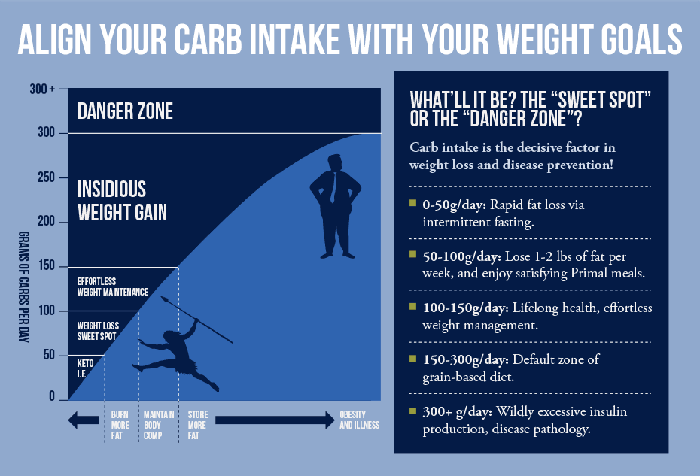If you missed yesterday’s post taking a well-earned jab at the conventional wisdom concerning macronutrients and macronutrient partitioning, scroll down (or click here) to read. Now, let’s get down to some practical nitty-gritty details…
Getting to Your Best Macronutrient Partitioning: First, the Caveats
When trying to dial in optimal macronutrient partitioning for any given individual (most likely you!), a couple of caveats are in order.
One, beware anyone (including the USDA) telling you that their formula / ratio / recommendations work for everyone, particularly if you have to pony up something (likely cash) up front to get the magic data. There’s a simple reason generic, one-size-fits-all partitioning recommendations aren’t worth much…
Two, your optimal macronutrient partitioning needs depend on a host of factors THAT ARE UNIQUE TO YOU; potentially including (a short list, just for example):
- Your current objective(s): be it weight loss, athletic performance, cognitive improvement, general well being, longevity, etc.
- Your current body composition: Are you overweight, underweight, lacking appropriate muscle mass?
- Your overall metabolic health: Are you in full-blown metabolic syndrome with insulin resistance, on the edge, or “fairly healthy”?
- Your overall level of activity: Are you a cubical-bound couch potato whose idea of a workout is the walk to and from the car in the parking lot, an occasional, casual walker, perhaps working a physically demanding job, or a gym rat?
- Your overall general health: Do you have conditions that impact your body’s functions in a material way, such as joint problems (degenerative arthritis), heart disease or hypertension, poor sleep, or stress you can’t manage?
- Your age: For example, protein requirements increase in the elderly, and the elderly’s protein requirements may be more impacted by higher activity levels.
- Your current progress in your recovery journey: Your best macronutrient partitioning will change over time, pending where you are in your health and wellness journey, and as you purposefully get leaner, more fit, and thoughtful about how you fuel your mind and body.
Optimizing your macros takes paying attention to what your body’s telling you; it’s time to start listening…
Getting to Your Best Macronutrient Partitioning: Carbs
In all the study, reading, and learning I’ve done over the years, from where I sit no one has done a better job illustrating the role that carbs play in your macro intake than Mark Sisson of The Primal Blueprint and Mark’s Daily Apple. In particular his carbohydrate curve packs a boatload of information into one simple yet inspired graphic, reproduced below.

There’s volumes to talk about with regard to carbohydrate intake and we’ll be focusing on the subject extensively here on in months to come. At this point, as the vast majority of folks that I interact with have as a primary objective optimizing lean body mass (for most that means dropping fat and building/preserving muscle), we typically start by targeting 100 g (net) or less of carbs / day.
Getting to Your Best Macronutrient Partitioning: Protein
The current RDA for protein – 0.36 g/lb lean body mass (or 0.8 g protein/kg LBM) – is based on assumptions that don’t apply to many: a sedentary lifestyle, healthy / metabolically sound, with normal lean body mass and not trying to build muscle/increase LBM. For active individuals, for years have recommendations have quickly spun up into the 0.7 to 0.8 g/lb range (or higher).
Interestingly, many in the ancestral health and wellness world have been for some time challenging the RDA dogma above, and suggest that the minimal requirements may indeed be much lower, in the range of 0.5 g/lb LBM.
Intuitively you know that athletes need more, though as science drills down with more and more specific research, the shockingly high amounts of protein recommended (for example in body builders) appear to have quite potentially been simply too much. Suffice it to say that a large portion of the strength training community holds that 1-2 g protein/lb of LBM per day is reasonable.
For those seeking weight loss, and recognizing that goal number one is loss of fat and not lean body mass (muscle being the largest component of LBM), studies have shown that upping protein (basically doubling the RDA above) improves weight loss and better preserves LBM.
The elderly and those recovering from significant illness or injury need more protein (in the ranges of 0.5-0.6 g/lb LBM and 0.7-0.8 g/lb LBM respectively).
We’ll have much more to say about protein in weeks and months to come, but at this point we steer most to target roughly 0.5 to 0.6 g of quality proteins/lb of LBM per day, and adjust within 3-4 weeks based on your body’s response.
We’ll take a hard, detailed look at what constitutes optimal protein sources in a few weeks, and
tomorrow we’ll take a look at fat and some final thoughts on macronutrient partitioning.



[…] There’s a bit more detail about typical adjustments made to protein intake in this post from a few months back, and critically you’ll probably end up doing some experimentation to see what works best for you. […]